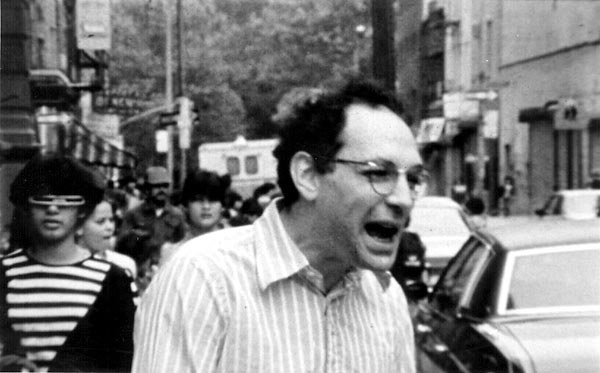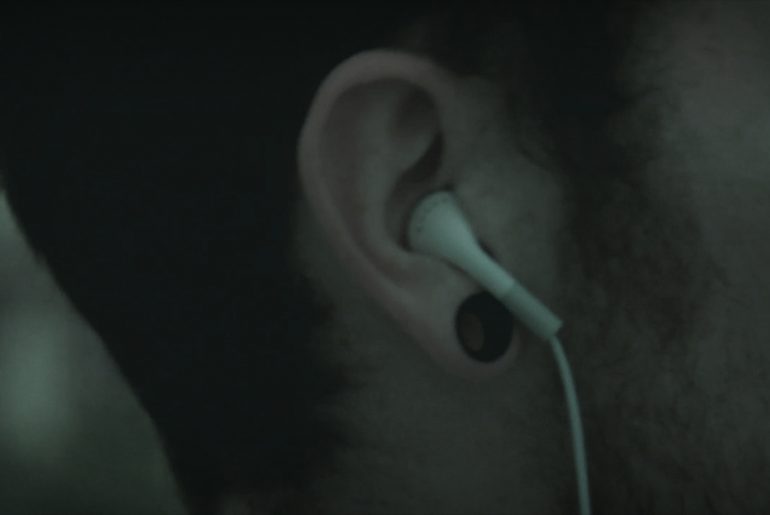One question that comes up frequently in discussions of ambient literature is how it is connected to other forms and other traditions that have interrogated the place of writing and performance in the world. In particular, I want to pick up previous threads that have discussed ambient literature’s connections to poetry and certain versions of the idea of the artifice as it functions in ambient literature. In many ways, these issue dovetail with a few of the seminars around ambient literature that have been held, particularly as they gesture toward ambient literature’s connections to the history of the book and understandings of reading in general. For me, these ideas coalesced in a recent (re)reading of Charles Bernstein’s (1992) A Poetics. Published in 1992 (with many sections of the book finding their origins as far back as 1985), A Poetics is a collection of essays on the avant garde traditions of…
Ambient Literature, Voices Inside Your Head?
In the first of Patrick Ness’ truly impressive dystopian YA science fiction trilogy, The Knife of Never Letting Go (2008), published by Walker Books, we meet Todd, a second generation teenage settler on a distant planet. New World’s physical laws, landscapes, and climate largely echo that of Earth. The indigenous people are a species of humanoid aliens, referred to by settlers as the Spackle. However, it is “the Noise,” allegedly caused by a Spackle virus, that makes life on New World remarkable. Affecting male settlers and animals, the Noise makes inner thoughts audible at a range further than the spoken voice. Implications ricochet. A constant din surrounds people living together in towns or villages. Hearing others’ thoughts means that males are “readable;” their inner life is on display, even while asleep. It doesn’t matter what is actually said, when thoughts as words and emotional tones can give you away. Inner…
Near Enough
In his blogpost “Ecstatic Ambient Literature,” colleague Matt Hayler wrote about how ubiquitous computing might provide stories that are waiting to be read, stories that are “in the air” or “in the walls.” Last month, the entrepreneur and digital maker Michael Kowalski came to talk to Bath Spa’s Digital Writing Research Group about his new digital story game platform, Storienteer, a platform that will enable people to create augmented reality games. Michael talked about how he thinks that the most interesting thing about Pokémon Go is that it demonstrates the power of augmented reality, in particular, not very accurate augmented reality. I would add that Snapchat, with its puking rainbows and zombie mask filters, has also shown how much people enjoy augmented reality even when the implementation is very simple, what Michael called “near augmented reality,” or perhaps even, near enough. We like accessing an extra layer of perception through…
Baking in the Knowledge Exchange
One of the ideas behind this research project has been to have a dialogue with mainstream cultural industries about practices that until now have existed in heritage or experimental media art spaces. As researchers and artists we’re pretty good at getting on with making extraordinary things and, occasionally, having brilliant ideas, but we’re traditionally not so good at giving them wings in the world beyond the academy. Long experience of what used to be called “knowledge exchange” teaches me that for it to be effectively achieved you need to bake in partnership from the start of a project. You don’t wait to find some results before you take them out to road test, its much better to co-design them along the way with the people who might have a use for them. On this project part of our research problem is how to scale work that already constitutes a field,…
Ecstatic Ambient Literature
All spaces touched by humans will have their own encircling information stretching out over space and time. In our landscapes we have the traces of fossils, bones, cairns and other graveyards, architecture of all kinds, and the worked and reworked soil of farmlands, coal mines, gasworks, orchards, and forests. In our cultural lives we have oral histories, gossip, overheard conversations, interlocutors, artworks, adverts, announcements, preachers, signs, warnings, and portents. And to this patchwork we’ve added radiowaves, microwaves, wifi, Bluetooth, cellular data, transcontinental and transpacific and transatlantic internet cables, and the other trillion wires of ubiquitous computing, household homeostasis, and surveillance infrastructure. There are always stories to be read and written around us, always stories in the air; to quote the movie Aliens: “they’re in the walls.” To me, Ambient Literature is a literature which explicitly responds to this knowledge and recognises its distinctive character and intensification in our current moment.…
Shifting into a Minor Key
A week ago, the Ambient Literature team, working with Circumstance, premiered the second in our series of small experiments in form for Ambient works. The files and content will be up on the website in the next few weeks, but for now, I wanted to share an initial thought on something the piece brought to light. Attention Conventional fiction — the short story for example — is built on a word count. Writing defines a short story by length. Wikipedia (helpfully or not) suggests that a short story is “a piece of prose fiction that can be read in one sitting.” Generally, short fiction is something between 3 and 9 thousand words. A single sitting is, maybe, ten to twenty minutes. Perhaps a little longer. When I was writing yesterday you’re still dreaming I had a time limit in my mind — twenty minutes — as a guide to how…
Locating the Literary
Examining ambient literature as an emerging literary form led me to “Screening the Literary: Writing Quality on the Web,” a workshop held at Lancaster University in October. Run by the Authors and the World Research Hub, an AHRC-funded collaboration researching the position of the author as both cultural artefact and producer of literary texts. This one-day workshop brought together researchers working in several fields, from French studies and contemporary arts to computing. There was an emphasis on examining the book as a cultural form and the shifting position of the author in digital spaces. Erika Fülöp, workshop convenor, recognises that although the potential death of the printed book has been debated since the 1990s there are still questions to be asked about applying the term “literary” to digital texts, particularly considering they can take various forms, and include multiple elements, such as audio, images, and video. The workshop asked, “How…
Drawing What’s Not There
One of the methods we use to teach first year students to think about drawing differently (context: I teach drawing and printmaking when I’m not making and researching new forms of literature) is to use negative space in order to draw. To look at what’s not there as much as they do at the object they’re drawing. What this teaches them (hopefully) is that the space around a form is as important as the form itself. The unspace, so to speak, between the architecture of a building and its surroundings illuminates aspects of the relationship between each piece of steel, concrete, and glass and the people moving through that space. That’s been on my mind this week as we prepare the final elements of our second experiment in Ambient Literature. Yesterday you’re still dreaming is a short, focused piece of research-by-practice; an intervention into the overall programme of work in order to…
Driving with Barthes
As a child, I read a lot in the back of cars. My parents, then recent immigrants to the UK, drove regularly across Northern Europe for family and work, and, unlike my sister, I was blessed with a constitution that allowed me to read in any sort of moving vehicle without feeling nauseous. Not every readerly child, of course, grows into a readerly academic, but the “use” of reading to while away the hours of a journey, or for that matter to while away the hours before that journey begins at the bus-stop or airport, is socially ubiquitous, even more so now with mobile phones. Reading while travelling, though, is itself relatively new. Despite the handful of readers in the past who startled their contemporaries with their ability (and desire) to read and walk at the same time—plus ça change—reading on the move needed to wait for the technologies of…
Was Tom Raworth’s Ace the start of ambient literature? No, but . . .
This is a picture of my copy of the Edge Books reissue of Tom Raworth’s Ace (2001). Initially printed in 1974 and reissued in 1977 and 2001, it was given to me years ago by poet and editor of Raworth’s selected poems, Miles Champion. It was Miles who first introduced me to Raworth’s work and seemed to have an endless stack of copies of Ace sitting around to put into receptive hands. It can’t really be made out in the photo, but the spine of the book is permanently rolled from the months (or maybe years) that I spent carrying the book in my back pocket. For me, the book is deeply connected to the time that I spent reading it while on the F train on my way to and from work when I was living in New York. Maybe “reading” is too strong a word. At least in…



